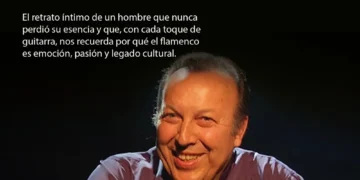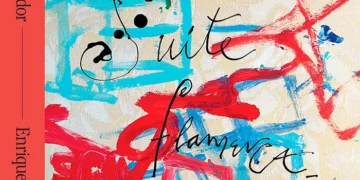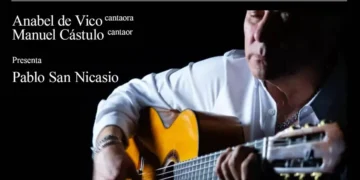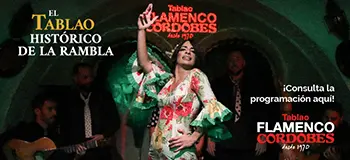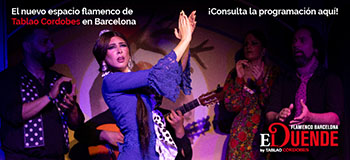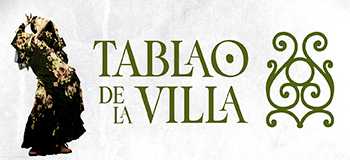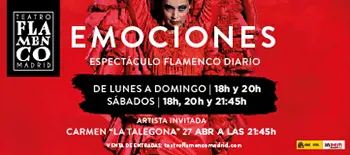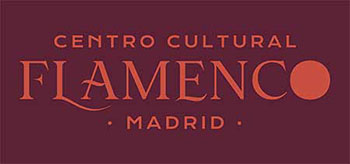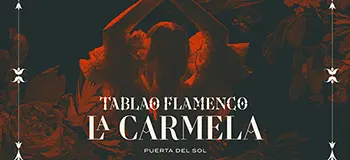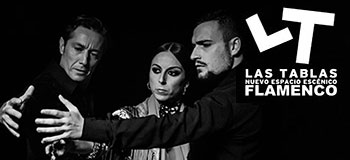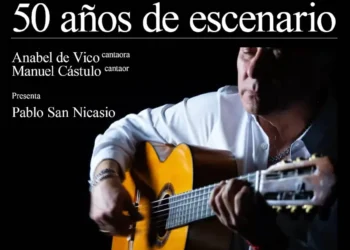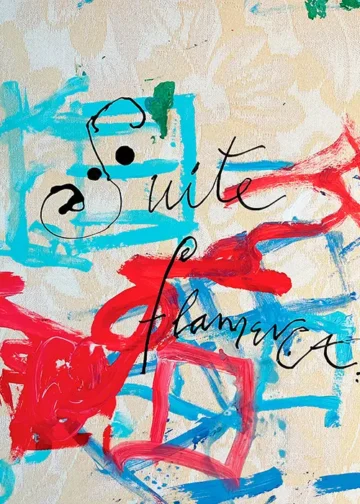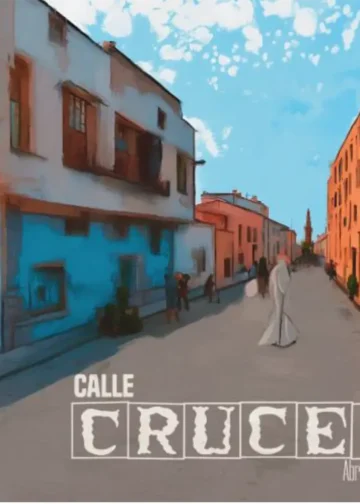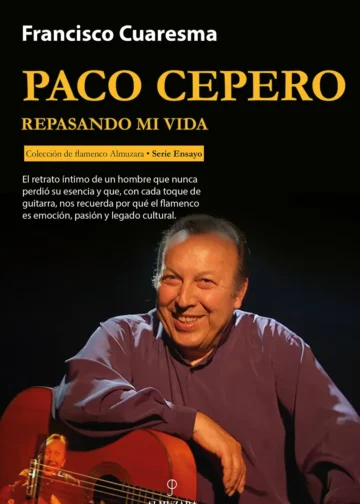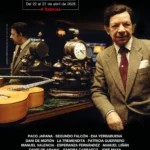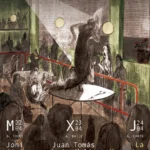|
Guitar: Jesús Torres, Juan José Amador. Cante: David
Lagos, Juan José Amador. Percussion: Nacho López.
Cello: Manuel Nela
Text & photos: Estela Zatania
The Festival of the Mistela is among the longest-running
– they don’t even bother to number the editions any
more – and it’s one of the ones that has managed to
reinvent itself. What started out in the seventies as your typical
open-air event with an abundance of artists and a dearth of technology
is now a polished product that fills six days each October with
parellel actiivities and shows in the town of Los Palacios y Villafranca
nestled close by Utrera.
Isabel Bayón, the child prodigy who at five was studying
with Matilde Coral, at sixteen obtained her degree in Spanish dance
from the conservatories of Seville and Córdoba and was presented
at the Lope de Vega theater by none other than the great Antonio
Ruiz Soler, is now 36 and has managed to defend and maintain her
particular niche in the new generation with a mixture of classic
and avant-garde forms. In the great and recent tradition of current
flamenco, Bayón is more cerebral than visceral, but her preparation
and ability are admirable. Precision, strength, impeccable lines
and a carefully cultivated back-up denote many hours of studio time.
 |
 |
|
Juan José Amador & Isabel Bayón
|
Isabel Bayón
|
“Del Alma” premiered several years ago and continues
in the line of dances with no unifying story line alternating with
guitar and cante solos, experimentalism alleviated by moments of
traditional flamenco and a high level of competence in all the elements.
With an Egyptian aesthetic of geometric lines, not only in the choreography
but in the dancer’s figure and even the features of her face,
Bayón projects a serenity that borders dangerously on glacial.
Israel Galván, the genius of flamenco dance with whom Isabel
has collaborated and who has floated to the surface as the spiritual
leader of this new look announced by Mario Maya three decades ago,
achieves an expressive dimension generally lacking in those who
follow the school.
Everyone dressed in black, black backdrop, scant illumination and
relentless overhead spots…one wonders if at some future time the
stark staging won’t seem hopelessly dated, forever linked
to our era. In the vestibule of the theater there is an exhibit
about the history of the gramophone and its relation to flamenco.
One ad boasts “elegant design and solid construction”
and we see the image of a pseudo-baroque monstrosity. The point
is well-taken. Isabel Bayón clearly represents the elegance
of contemporary flamenco, but “elegance” is neither
a static nor a universal quality and there is always the risk that
an overdose of austerity and minimalism may communicate plain old-fashioned
coldness.
Defending and maintaining her particular
niche in the new generation with a mixture of classic forms and
the avant-garde
The sober presentation is a free-form dance with cello that has
little or nothing to do with a Spanish aesthetic, although it is
lovely to watch. A “caña” keeps the bare minimum
of traditional references to be recognizable, not a complaint but
an observation, and singer Juan José Amador transforms the
customary “lament” that comes between verses into a
contemporary flourish. The guitarists dwell on minor-key chords
giving a tense feeling due to the absence of C major, usually so
important in caña and some free-rhythm guitar variations
further deconstruct the form. Interesting experiments not easily
dismissed.
 |
 |
|
Fernando Romero & Isabel Bayón
|
Isabel Bayón
|
Bamberas por fandango is the unusual choice for one of the cante
solos in the warm cuddly voice of Juan José Amador. But hold
on…no…it’s bulerías after all with Camarón’s
Leyenda del Tiempo for a closing and still sounding fine after all
these years. Isabel appears in basic black, a strapless bata de
cola worthy of a jet-set cocktail party with tonás and siguiriyas
playing in the background as the guitarists make excellent use of
alternative tuning. God bless the unfailing dignity and dedication
of young singer David Lagos who offers his respectful interpretation
of “Mal fin tenga este sueño” to contemporary
accompaniment letting us hear that classic siguiriya with fresh
ears. We move on seamlessly to martinete, the tempo doubles for
a bulerías feeling and Isabel overindulges in cool moves
for a stylized dance that matches her sleek strapless bata.

Romero sports another sort of elegance, that of classic ballet,
because each and every one of his movements reiterates that influence
and preparation. A pas de deux with Bayon to cello with ethnic percussion
leads into a multi-purpose ternary rhythm. Juan José Amador
quickly puts things in order with cante abandolao followed by folkloric
verdiales, Isabel and Fernando let down their hair, the guitarists
have a ball imitating the sound of bandurrias as used by Málaga
folk groups and this is the novel, lighthearted ending to a carefully
crafted show.
Following the example set by other festivals, the organizers of
the Mistela programmed informal late-night shows at the Tertulia
Flamenca El Pozo de las Penas. On this occasion María José
Carrasco and guitarist Manolito Herrera see to it that no one has
to go home without having found a type of flamenco to suit every
taste.
María José Carrasco &
Manolito Herrera
- Isabel Bayón – 'Del
Alma' - Fernando Terremoto &
Capullo de Jerez - Pepa Montes. Bailaora. Manuel Molina,
Segundo Falcón, Ricardo Miño - Historias de Arte: Matilde Coral, Chano
Lobato…
More information




